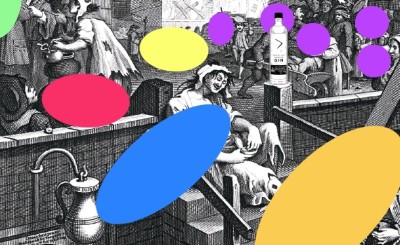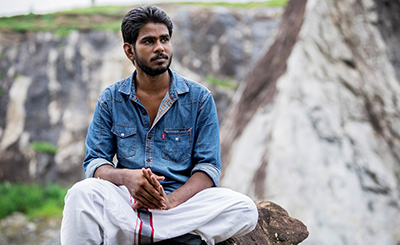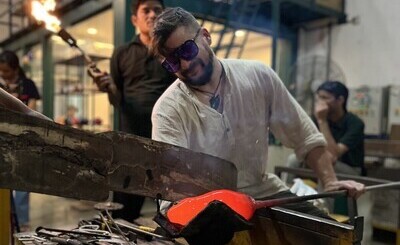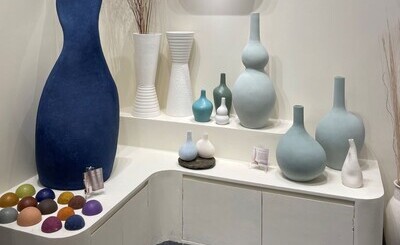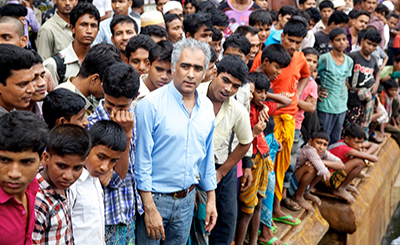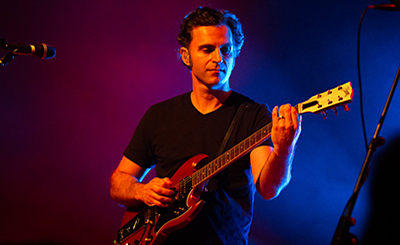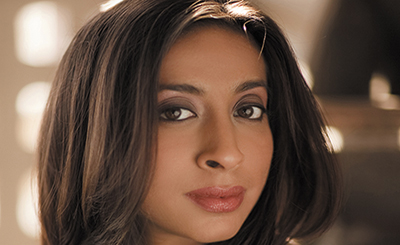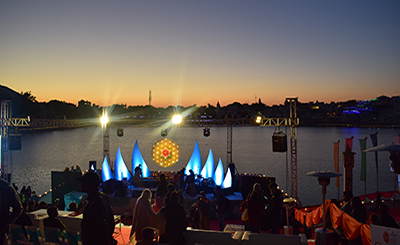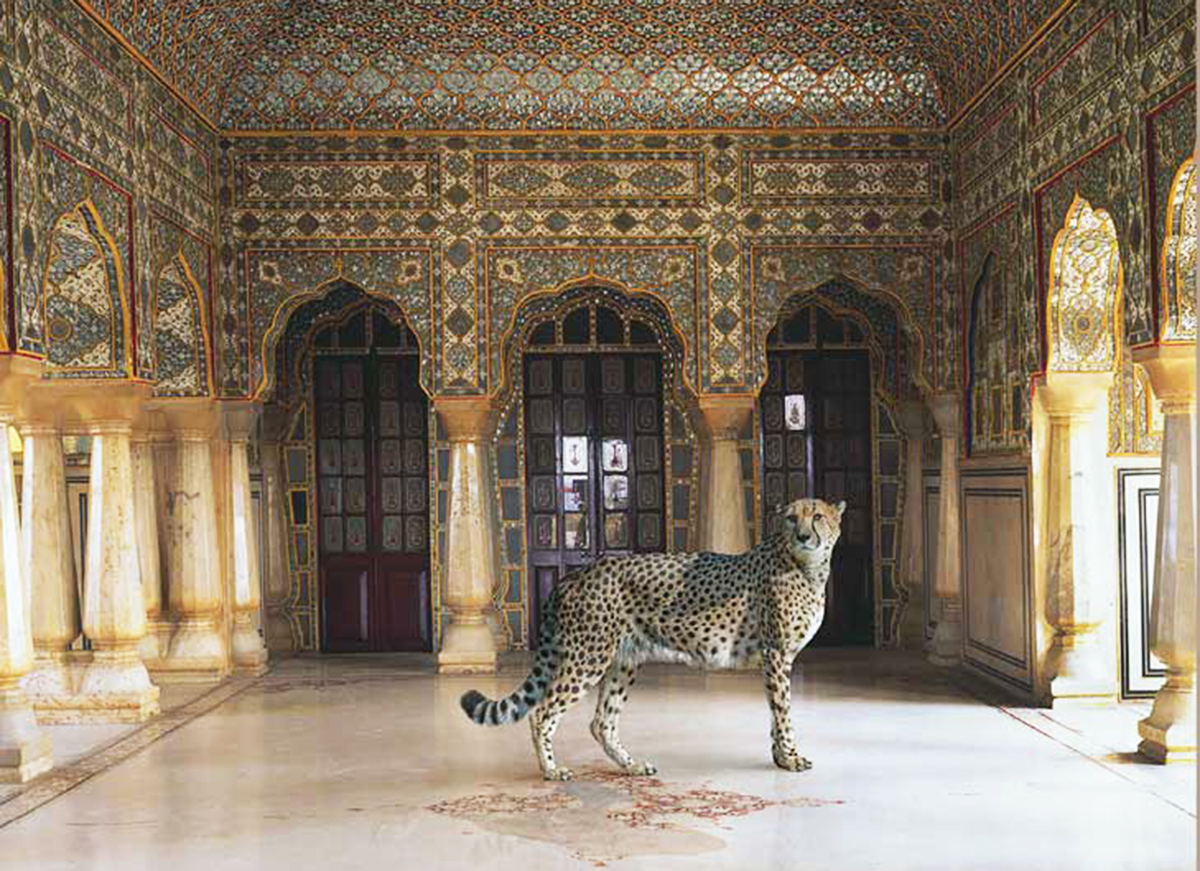
A photograph by Karen Knorr; (Below) Works by Amitava Das, Jayashree Chakravarty, Manisha Gera Baswani and G R Iranna
A show at the Kiran Nadar Museum of Art shines light on our relationship with the animal world
Art lovers in Delhi recently got a dose of the wild at "Sightings: Out of the Wild", a show held at Kiran Nadar Museum of Art (KNMA), Noida. The show brought together over 150 artworks of 40 artists, covering sweeping history of art practice from the modern to the contemporary.
Curated by Roobina Karode, director and chief curator, KNMA, the show was replete with artworks depicting animals in various states and surroundings — a startled cheetah within a palatial interiors; a panther in its flamboyant pink body covered with sperm-shaped bindis; an elephant made of burnt wood, excreting silver poop; rhinoceros made out of reclaimed industrial packaging wood and burnt and recycled paper pulp; a conference of birds and beasts against smoke-filled sky or derelict cityscape. The artists — both masters and contemporary — whose works were on display included GR Iranna, Ashim Purkayastha, Amitava Das, Arunkumar HG, Jagannath Panda, Jamini Roy, Jayashree Chakravarty, Jitish Kallat, Manisha Gera Baswani, Manjit Bawa, M F Husain and Rabindranath Tagore.
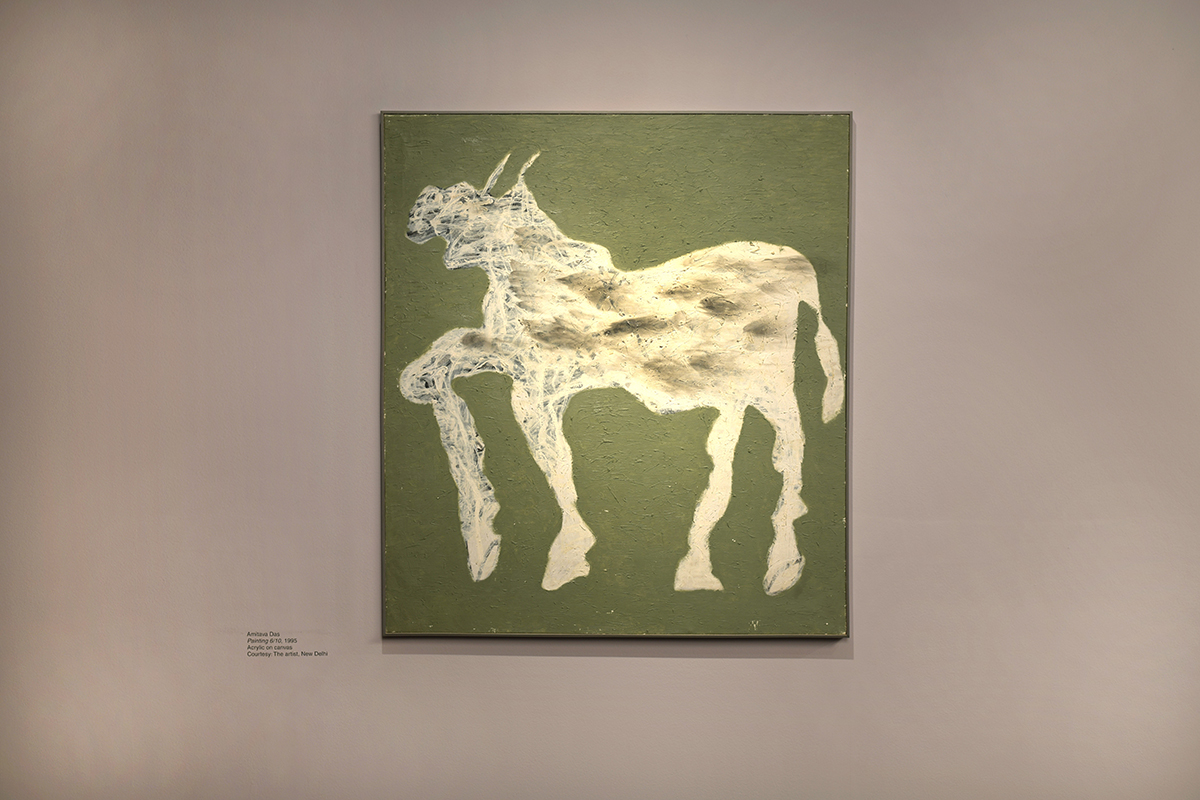
Karode says she was driven by the exigency of the theme rather than looking for a specific period or form in the making of the exhibition. While most works were from the KNMA Collection, there were several more works that Karode could not include in the exhibition. She intends to do a Part 2 of the show and showcase the works by other artists like Pratul Dash, Rajendra Tiku and Reena Saini Kallat, to name a few.
As a curator, Karode was struck by Vasudev Akkitham’s sensitivity towards the theme as well as the medium (painting) he uses to condense his concerns about the disorientation faced by animals in a world dominated and controlled by humans. In Jayashree Chakravarty’s Cocoon, where we see insects gravitate and come together for safety. In Manisha Gera Baswani’s installation, Feathers, used collected traces left behind by birds disappearing from our congested and polluted cities. “It is rather quite rare that one enjoys curating an exhibition where each work sits perfectly well within the flow of the narrative. For me, each work in this exhibition was special to me, for various reasons,” she says.
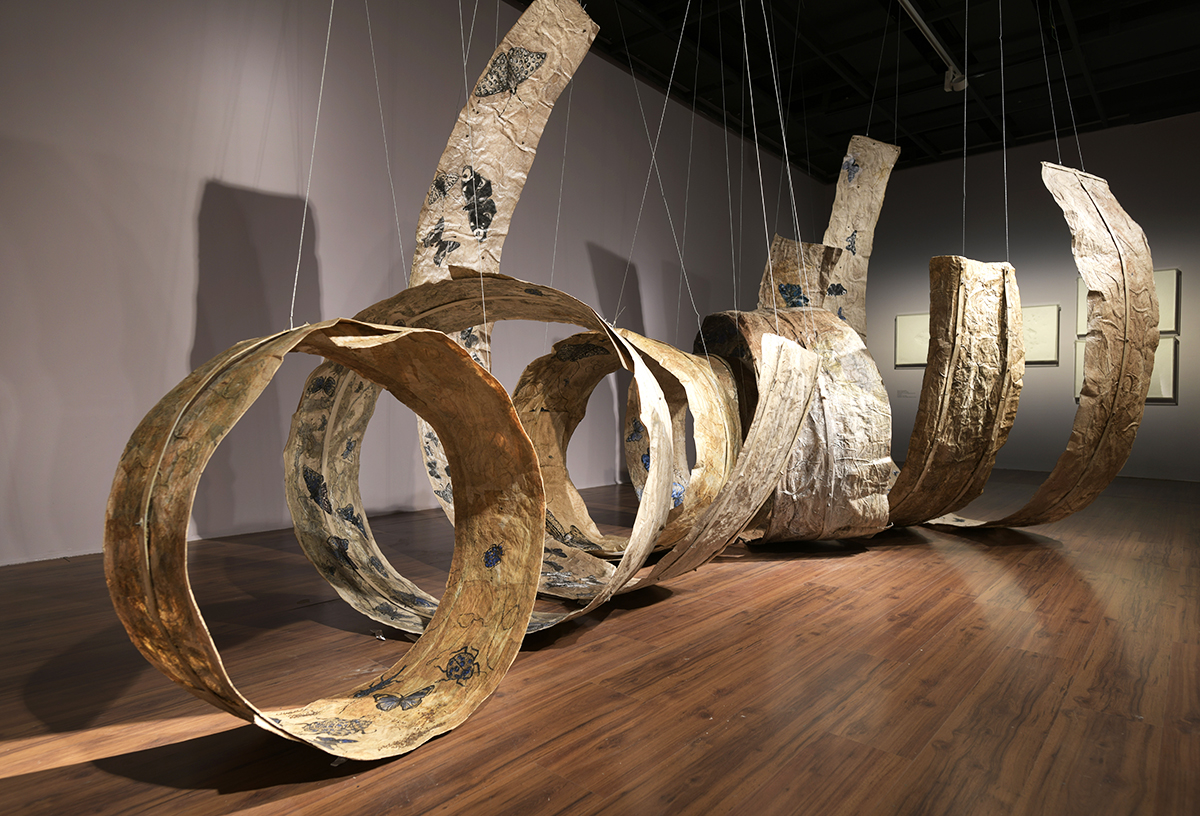
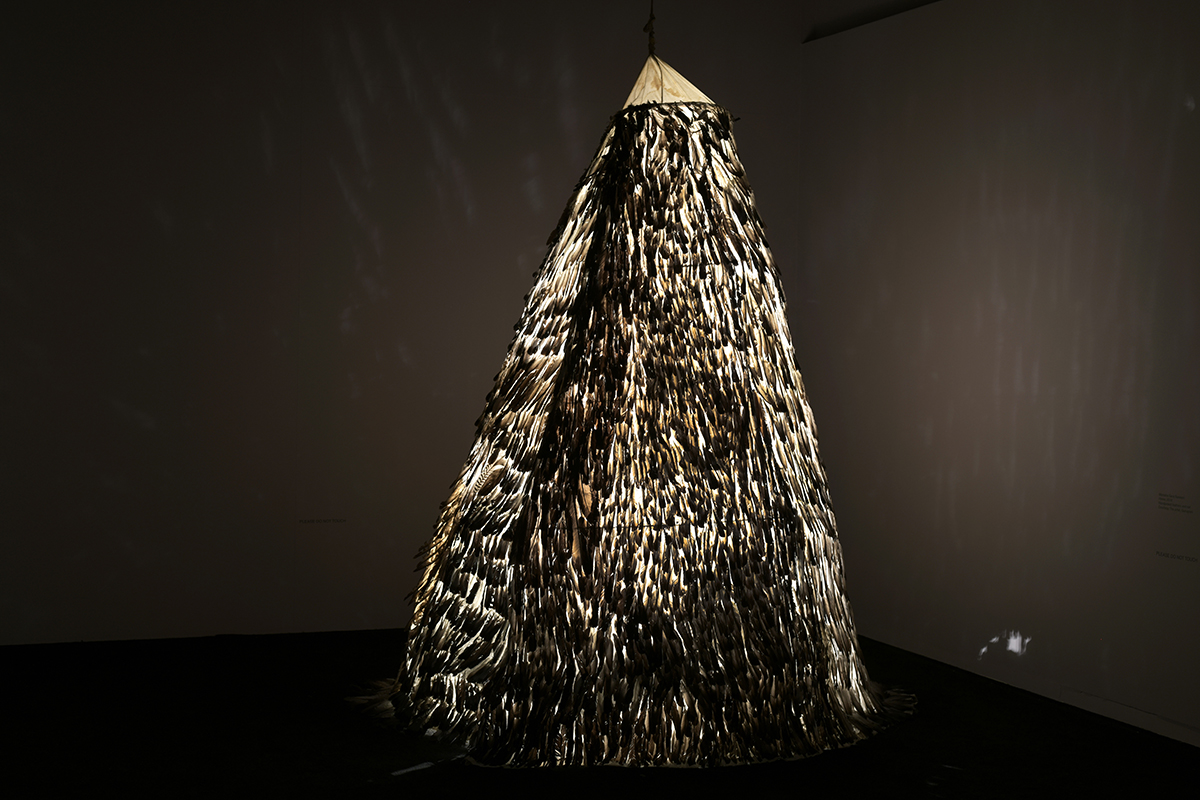
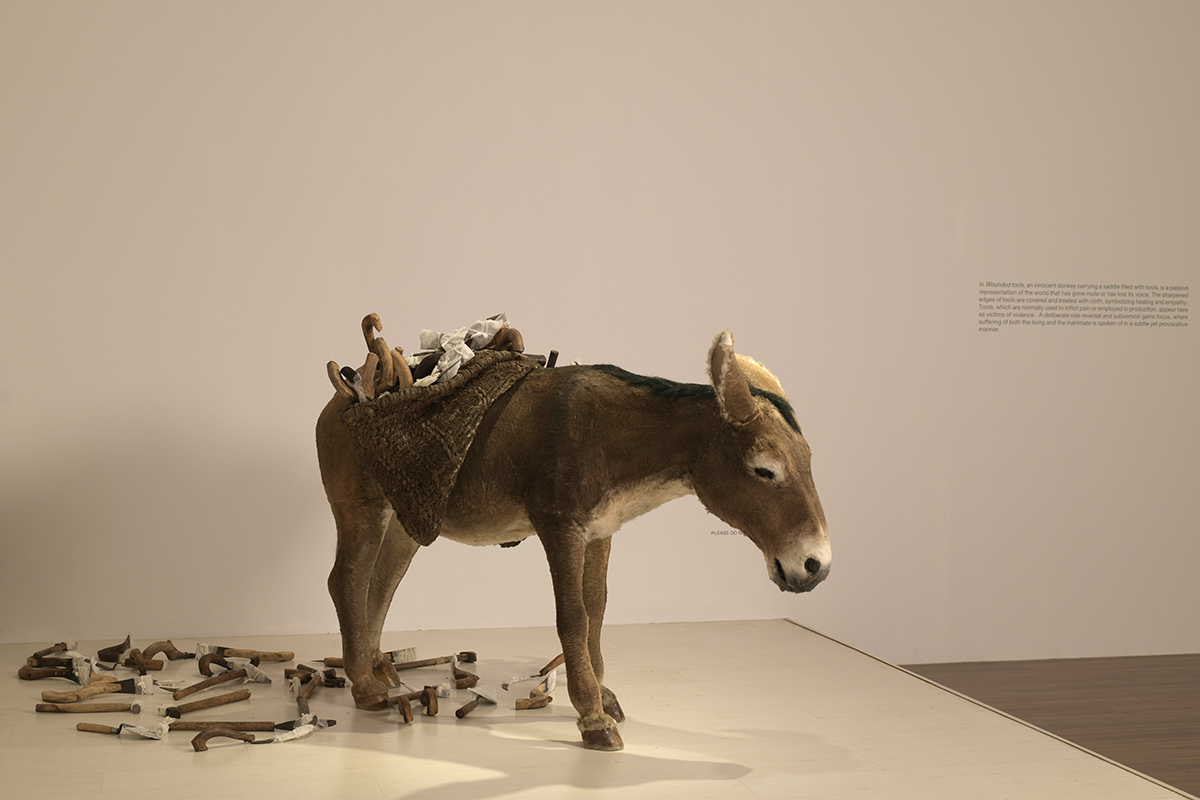
What did Karode refract from the perspectives of each of these artists on our relationship with the wild? “Our relationship with the wild is distraught and there is an urgent need to find ways of connecting and comprehending Nature and the animal world,” Karode says.
Several artists, including Iranna, Purkayastha, Das, Panda, Chakravarty and Baswani were present at the opening of the show. Iranna’s installation, Wounded Tools, made using fiber glass, artificial fur, iron, wood and acrylic coloring, cloth, made a kind of commentary on human "civilizational growth and its intrinsic follies". In his artist's statement, Iranna writes: "In the name of civilization, territorial aggressions, ideological indoctrinations, homogenization of tastes, etc. are violently inflicted upon human beings. This is done with an intention to create a ‘world order’. Wounded Tools is an exclusive and poignant metaphor; it has a donkey mutely carrying a saddle filled with tools. The sharpened edges of tools are bandaged, showing blood stains. Through a deliberate reversal and subversion, I have made the tools (which in fact could inflict wounds) the actual victims of civilisational violence. The depiction of agrarian tools and the deliberate avoidance of tools of aggression tell the story of transition of societies from their primal innocence to more contrived and calculative existence."
More from Arts
Comments
*Comments will be moderated




